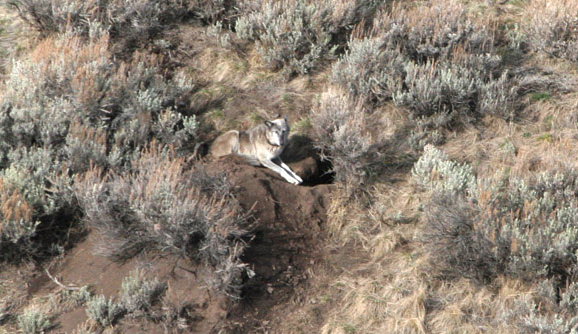Large carnivores can be found in different scenarios of cohabitation with humans. Behavioral adaptations to minimize risk from humans are expected to be exacerbated where large carnivores are most vulnerable, such as at breeding sites. Using wolves as a model species, along with data from 26 study areas across the species' worldwide range, a meta-analysis was performed to assess the role of humans in breeding site selection by a large carnivore. Some of the patterns previously observed at the local scale become extrapolatable to the entire species range provided that important sources of variation are taken into account. Generally, wolves minimised the risk of exposure at breeding sites by avoiding human-made structures, selecting shelter from vegetation and avoiding agricultural lands. Results suggest a scaled hierarchical habitat selection process across selection orders by which wolves compensate higher exposure risk to humans within their territories via a stronger selection at breeding sites. Dissimilar patterns between continents suggest that adaptations to cope with human-associated risks are modulated by the history of coexistence and persecution. Although many large carnivores persisting in human-dominated landscapes do not require large-scale habitat preservation, habitat selection at levels below occupancy and territory should be regarded in management and conservation strategies aiming to preserve these species in such contexts. In this case, evidences recommend providing shelter from human interference at least in small portions of land in order to fulfill the requirements of the species to locate their breeding sites. informacion[at]ebd.csic.es: Sazatornil et al (2016) The role of human-related risk in breeding site selection by wolves. Biol Cons 201 103-110 doi: 10.1016/j.biocon.2016.06.022
http://www.sciencedirect.com/science/article/pii/S0006320716302464

 Las altas temperaturas están provocando que las lagunas y las marismas de Doñana pierdan agua rápidamente
Las altas temperaturas están provocando que las lagunas y las marismas de Doñana pierdan agua rápidamente




